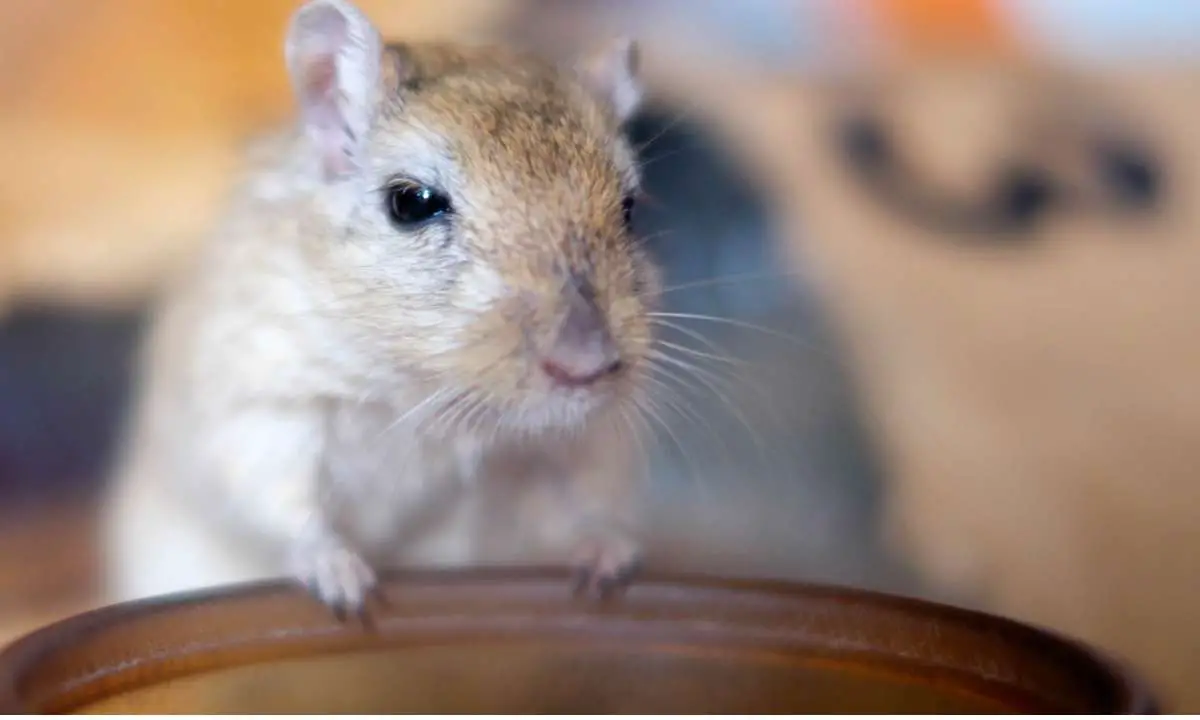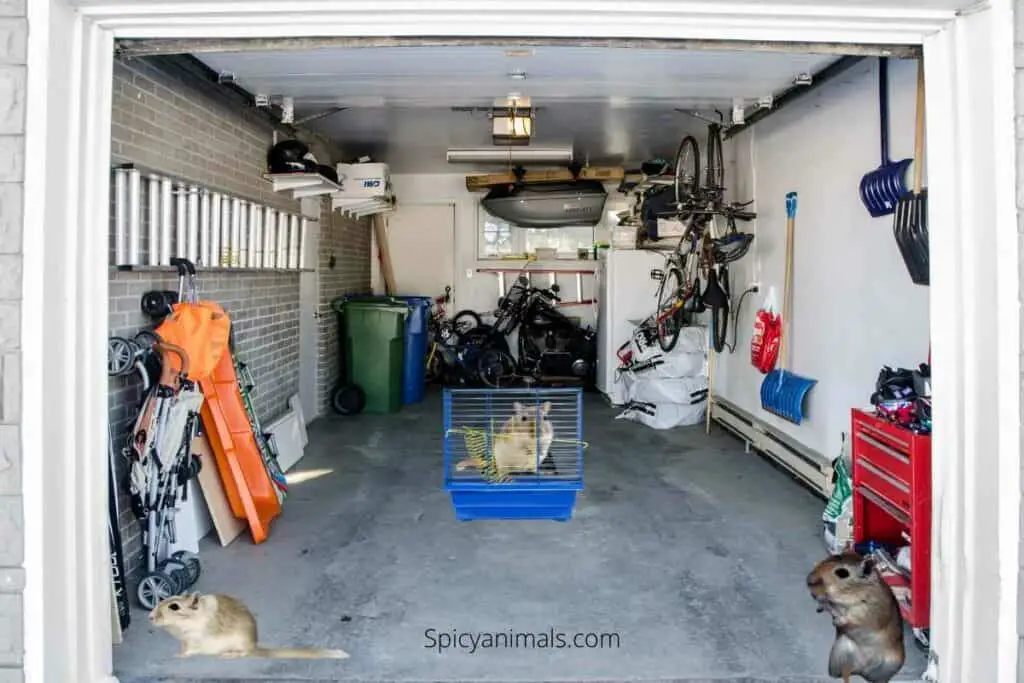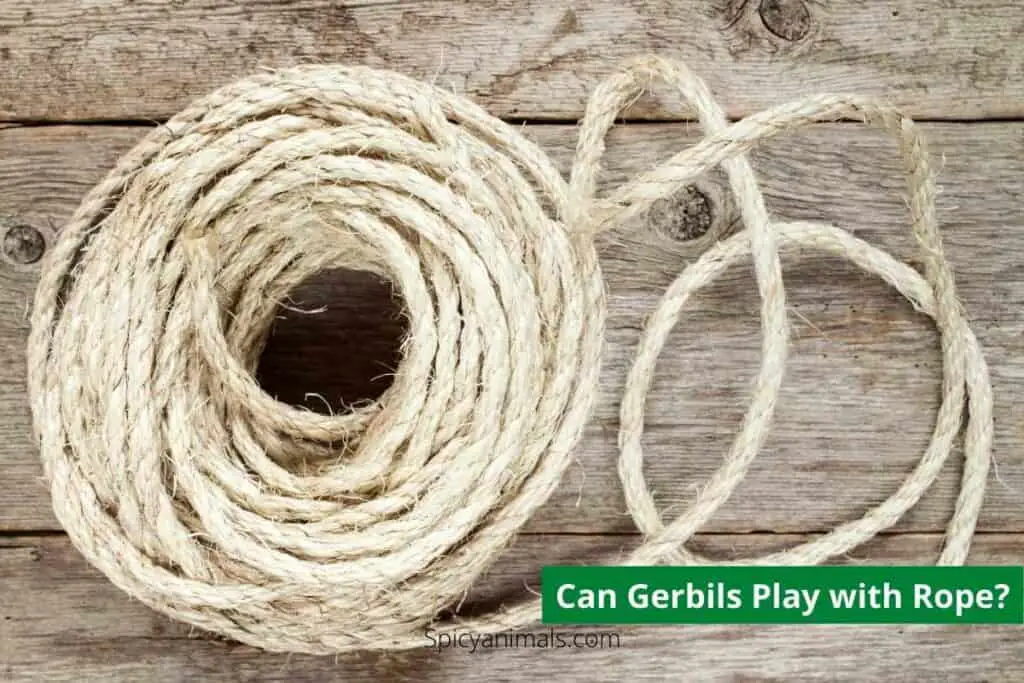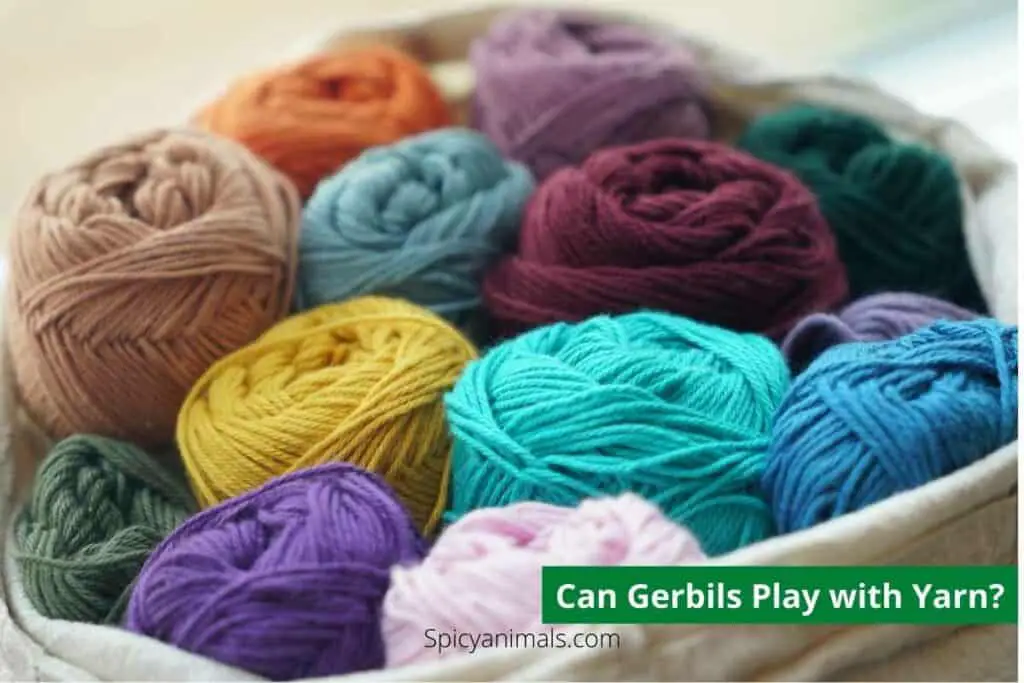Owning a pet gerbil can be a truly rewarding experience, provided that you create the best possible environment for your furry companion. Understanding the ideal gerbil habitat is essential to ensuring a long and happy life for your pet.
In this comprehensive guide, we will explore everything you need to know about setting up the perfect gerbil cage and housing, so your gerbil can flourish in their new home.
We will discuss the importance of a well-designed environment for gerbils and dispel common misconceptions about their proper care. With our guidance, you’ll be well-equipped to create an exceptional living space for your cherished pet!
Table of Contents
Habitat
Size and type of enclosure
To maintain your gerbil’s health and happiness, it’s crucial to provide them with an appropriate habitat. The size and type of enclosure you select should depend on the number of gerbils you own and their activity levels.
When choosing a gerbil enclosure, the minimum recommended dimensions are 30 inches long by 12 inches wide by 12 inches high. This size offers ample space per gerbil for them to move around, explore, and play without feeling cramped or overcrowded.
Glass aquariums and wire cages are two popular types of gerbil housing. Glass tanks provide a secure environment that’s easy to clean, while wire mesh cages offer excellent air circulation.
However, glass tanks can have limited ventilation, and wire cages might not be as secure as their glass counterparts. It’s essential to consider your gerbil’s needs when deciding on the best type of enclosure.
Choosing the Best Bedding and Substrate for Your Gerbil’s Habitat
Gerbils are small, active rodents that require a secure and comfortable environment. Selecting the right bedding and substrate is crucial to ensure their well-being.
The ideal bedding for gerbils should allow them to burrow and be composed of a mix of plant-based materials (wood or hemp), paper, and hay. Carefresh Shavings Bedding is a top choice due to its safety, absorbency, and premium substrate composition. Other popular options include aspen wood shavings, pet-safe paper, and hay.
Safe Materials for Gerbil Housing
When selecting bedding materials for your gerbil’s habitat, ensure they are safe and non-toxic. Wood shavings, aspen wood shavings, pet-safe paper, and hay are all appropriate materials for gerbil bedding.
Avoid using pine or cedar shavings, as they can cause respiratory issues in gerbils.
Materials to Avoid in Your Gerbil’s Habitat
It’s essential to avoid potentially hazardous or toxic materials when choosing bedding for your gerbil’s enclosure.
Steer clear of pine or cedar shavings, as they can lead to respiratory problems. Additionally, refrain from using scented litter or deodorizers, as they can also harm your pet.
Importance of Burrowing and Digging in Gerbil Habitats
Gerbils love to dig and burrow, so providing them with a suitable substrate is vital for their well-being. A pan filled with sand on the bottom, topped with hay and sheets of untreated cardboard, offers an ideal environment for digging, burrowing, and chewing.
Supplying your gerbil with a safe substrate helps maintain their health and happiness!
Proper ventilation and temperature control
Maintaining the ideal temperature range of 68-75°F (20-24°C) is crucial for your gerbil’s comfort and well-being.
Consistent temperatures help prevent stress or discomfort caused by fluctuations. Additionally, it’s important to monitor humidity levels in the gerbilarium, as excessive moisture can lead to respiratory issues.
Aim for an optimal humidity level of 30-50%.
To achieve the ideal temperature and humidity levels, ensure proper ventilation throughout the gerbilarium. Adequate air circulation helps prevent drafts and sudden temperature changes.
If you’re using an aquarium or terrarium for housing, make sure it has sufficient openings for airflow without allowing your pet to escape.
Moreover, avoid positioning the gerbilarium near windows or other direct sunlight sources, as this can cause rapid temperature fluctuations.
By providing appropriate ventilation and temperature control in your gerbil’s habitat, you’ll establish a safe and comfortable environment for them to thrive.
Providing Safe Toys and Hiding Places for Your Gerbil’s Well-being
Gerbils are active pets that enjoy gnawing and playing, making toys and hiding spots essential for their physical and mental health.
However, it’s vital to ensure the toys and materials are safe for your gerbil within their cage or gerbil housing. Here are some tips on selecting secure toys and hiding places for your best gerbil friend.
Suitable Materials for Gerbil Toys
Selecting safe materials for your gerbil’s toys is crucial. Wood, untreated cardboard, paper, and timothy hay are all excellent materials for your pet to interact with.
Gerbils also appreciate chew toys made of multiple materials, such as wood and rope combinations. Avoid plastic or rubber toys, as they can be harmful if chewed and ingested.
DIY Toy Ideas for Gerbils
There are various DIY toys you can create for your gerbil using safe and affordable materials. Consider making a cardboard box maze, a rope ladder, or a foraging toy with cardboard tubes and seeds inside a box.
Alternatively, fill a shallow dish with a small amount of chinchilla dust bath and bury treats or seeds to create a foraging game. Get creative and design enjoyable and stimulating toys for your pet!
Importance of Hiding Spots for Stress Reduction in Gerbils
While gerbils are social creatures that thrive in pairs or small groups, they also need alone time. Providing ample hiding spots like a nest box within their gerbil habitat can help reduce stress and offer a sense of security.
A cardboard box with a hole cut into it or a wooden house can serve as a retreat for your gerbils when they want some solitude.
Hiding spots also help establish a hierarchical structure within a group of gerbils, with the dominant gerbil claiming the most desirable spot.
By supplying your gerbil with safe toys and plenty of hiding places in their cage, you’ll contribute to their happiness and overall well-being!
Remember to maintain a clean environment and provide adequate space per gerbil to keep your pet healthy and comfortable.

Appropriate Diet and Food Options for Gerbils
Gerbils are omnivores that consume both plant and animal-based foods. In the wild, they forage for a range of foods, including grass seeds, leaves, and herbs.
To ensure your pet gerbil stays healthy, provide a balanced diet when they are kept in their gerbil housing.
The ideal food for gerbils is a specially formulated gerbil mix, containing nuts, seeds, corn flakes, and dried vegetables. Include fresh fruits and vegetables, such as apples, carrots, broccoli, and spinach, as part of their balanced diet.
Treats like sunflower or pumpkin seeds can be offered sparingly, as they are high in fat. Avoid feeding your gerbil unhealthy snacks like chocolate or candy.
In addition to their regular diet, consider supplementing your pet’s food with vitamins and minerals not found in commercial gerbil food mixes.
You can also offer treats like mealworms or other insects as occasional rewards.
When setting up your gerbil habitat, provide a food bowl and ensure it is filled with a combination of commercial gerbil food mix and fresh fruits and vegetables.
Maintaining a balanced diet will help keep your gerbil healthy and happy in their cage.
Feeding Frequency and Portions for Gerbils
Establishing a daily feeding routine for your gerbil is crucial for their health and well-being. Regular feeding times help them anticipate when to expect food and allow you to monitor their food intake effectively.
Gerbils should be fed once or twice a day, depending on how much they consume in one sitting. It’s vital to adjust the portion size to prevent overeating or malnourishment.
When setting up your gerbil’s habitat, a proper gerbil cage is essential. A good gerbil housing option will provide space for the pet to thrive and for you to maintain a clean environment.
The best gerbil cages are designed to accommodate the specific needs of these social creatures.
Keep a close eye on your gerbil’s eating habits. A sudden decrease in food intake could indicate an underlying health issue that requires a veterinarian’s attention.
Conversely, if your gerbil is overeating, adjust the portion size to avoid weight gain and obesity.
A balanced diet is crucial for your gerbil’s well-being. The best gerbil habitat should include a proper setup with adequate space and opportunities for them to chew, as gerbils are natural chewers.
By providing the right environment and monitoring their food intake, you can ensure a happy, healthy life for your pet.
Clean and fresh water sources
Water is a vital component of your gerbil’s diet, and offering fresh, clean water is essential for their overall health and well-being. Gerbil owners have two primary options for water sources: water bottles or water dishes.
Water bottles can be a convenient and hygienic choice for gerbil cages, as they prevent contaminants from entering the water. Ensure the water bottle is securely attached to the cage and that the nozzle functions correctly, allowing your gerbil easy access to water.
Water dishes, on the other hand, provide a more natural experience for gerbils, who are accustomed to drinking from shallow sources in the wild.
Maintaining a water dish can be more challenging since it can become contaminated easily. Regularly clean the water dish and replace the water to prevent bacterial growth.
Regardless of the water source you choose for your gerbil’s housing, it’s essential to establish a routine for water replacement.
Change the water at least once a day, more frequently during hot climates or if the water appears dirty.
Algae growth can be a problem in water dishes, as it can create an unhealthy environment for your gerbil. To prevent algae growth, thoroughly clean the water dish and place it in a shaded area, or use a water conditioner.
Ensuring your gerbil has access to fresh and clean water is crucial for their health and well-being. Whether you opt for a water bottle or a water dish, adhere to a regular water replacement schedule, and take measures to prevent algae growth.
With proper care, your gerbil will thrive in their habitat, enjoying a happy and healthy life.
Gerbil Cages and Enrichment: Creating a Happy and Healthy Environment
The Ideal Gerbil Cage Setup
Setting up the perfect gerbil housing environment is essential for your pet’s health and happiness. A well-planned gerbil habitat will provide your gerbil with ample opportunities for exercise, play, and mental stimulation.
A 20-gallon aquarium or large tank with a secure wire lid is a popular choice for gerbil cages. Gerbils need at least 6-8 inches of substrate in their cage to provide structure to their burrows and allow them to chew their way through tunnels.
When setting up the cage, consider providing different levels within the space to accommodate the gerbils’ natural climbing instincts. Freestanding platforms and bridges work best for this purpose.
To keep your gerbil’s environment clean and unsoiled, designate a separate toilet area within the enclosure.
Exercise Options for Gerbils
Gerbils are active and energetic pets that need plenty of exercise to stay healthy. Exercise wheels are a popular option for gerbil owners, as they provide a safe way for gerbils to get their daily running in.
When choosing an exercise wheel for your gerbil, make sure it has a solid surface with no bars so their tails won’t get trapped or injured.
A wheel with a minimum diameter of 8 inches is recommended to prevent back injuries. Exercise balls are also a great way to let your gerbil roll around and explore safely.
Enrichment Ideas for Mental Stimulation
To keep gerbils mentally engaged and prevent boredom, provide a variety of enrichment activities that encourage them to explore their environment and engage their natural instincts. Some ideas for gerbil enrichment include:
- Puzzle toys: Challenge your gerbils’ problem-solving skills with hide-and-seek games using treats hidden inside cardboard tubes or boxes, mazes made from tunnels or bridges, or interactive food puzzles.
- Scent trails and foraging games: Encourage your gerbils to use their sense of smell to find hidden treats by creating scent trails throughout their habitat.
- Rotating toys and accessories: Switch up the items in your gerbils’ cage every few days to keep them happy and engaged.
- Providing a variety of materials: Offer materials such as cardboard, wood, or treats for your gerbils to explore and play with.
H3: Social Aspects of Gerbil Care
Gerbils are sociable animals, and it’s best to keep them in pairs or small groups to prevent loneliness and stress.
When adopting gerbils, consider bringing home at least two or more from the same litter or group to ensure compatibility. Be prepared to provide a larger cage to accommodate multiple gerbils comfortably.
Health and Hygiene
To keep your gerbil happy and healthy, it’s essential to perform regular health checks and provide proper care. Monitoring your gerbil’s behavior and appearance daily is crucial for catching any health issues early on.
Necessary Health Checks and Care
Taking your gerbil to the vet at least once a year for a check-up is an important part of gerbil care. During this visit, the vet will assess your gerbil’s overall health, including its weight, coat condition, eyesight, hearing, teeth, and claws.
Dental care is vital, as gerbil teeth grow continuously throughout their life, requiring regular trimming.
Signs of Potential Health Issues
Gerbils are generally healthy animals, but it’s important to be aware of potential health issues and know the signs of illness. Changes in behavior or appearance can be a sign of potential health issues in gerbils.
If you notice your gerbil is less active than usual, has lost its appetite, or is not grooming itself as much as normal, these could be signs of an underlying health issue.
Any changes in your gerbil’s fur or skin, such as bald patches or scabs, could also indicate a problem.
Common illnesses that can affect gerbils include Tyzzer’s disease, digestive disorders, bone and muscle disorders, skin disorders, and kidney disease.
If you suspect your gerbil may have a health issue, consult a veterinarian for diagnosis and treatment. Regular health checks should also be carried out to ensure your pet remains happy and healthy.
Cleaning and Maintaining the Gerbil’s Environment
Keeping your gerbil’s environment clean and well-maintained is a crucial part of being a responsible pet owner. Gerbils, being desert animals, have specific needs regarding their habitat.
Regularly cleaning their cage is necessary to keep your gerbil healthy and happy.
Spot cleaning should be done daily, while deep cleaning should be done every two weeks.
Spot cleaning involves removing any soiled bedding or food debris from the cage and replacing it with fresh material. Deep cleaning entails washing and disinfecting the tank and replacing all bedding.
When cleaning your gerbil’s cage, use non-toxic cleaners specifically designed for small animals like gerbils or create your own natural cleaner using ingredients such as vinegar and baking soda.
Avoid using harsh chemicals or scented products, as these can be toxic to your pet.
Providing regular health checks, being aware of potential health issues, and maintaining a clean environment are essential aspects of gerbil care.
By monitoring your gerbil’s behavior and appearance, scheduling annual vet visits, and cleaning their habitat regularly, you can ensure your gerbil lives a happy and healthy life.
Social Interaction
Understanding the social needs of gerbils and fostering positive interaction between them is vital for maintaining their well-being.
Understanding Gerbil Social Needs and Providing Companionship
Gerbils are naturally social animals, originating from Africa and Asia, where they live in large colonies. In the wild, they form complex social structures, which continue when kept as pets. To ensure their happiness and health, it’s essential to understand their social needs.
A pair of gerbils or small groups of the same species should be kept together, allowing them to interact and form strong bonds.
Keeping only one gerbil can lead to loneliness and stress, negatively impacting their health. Note that gerbils should not be mixed with other species, as this may result in fighting and aggression.
Companionship offers many benefits for gerbils, such as mental stimulation, stress reduction, and encouragement of natural behaviors like burrowing and digging.
Having multiple gerbils also provides comfort and security when exploring their environment or interacting with humans.
Introducing Gerbils to Each Other for Successful Bonding
Introducing gerbils to each other correctly is crucial for forming strong bonds and ensuring they live happily together.
A gradual introduction process is key to successful bonding between gerbils. Begin by placing their cages side-by-side, allowing them to get used to each other’s scent.
After a few days, swap the bedding between the cages so they can become familiar with each other’s smells
Owning a pet gerbil can be a truly rewarding experience, provided that you create the best possible environment for your furry companion. Understanding the ideal gerbil habitat is essential to ensuring a long and happy life for your pet.
In this comprehensive guide, we will explore everything you need to know about setting up the perfect gerbil cage and housing, so your gerbil can flourish in their new home.
We will discuss the importance of a well-designed environment for gerbils and dispel common misconceptions about their proper care. With our guidance, you’ll be well-equipped to create an exceptional living space for your cherished pet!
I
Conclusion: optimal gerbil environment
Overall, it is clear that creating and maintaining the optimal environment for your gerbil requires knowledge and commitment.
Responsible pet ownership includes understanding their specific needs as desert animals and providing them with a safe and healthy habitat to live in. With proper care from you, your gerbil can be happy and thrive in its new home.
By following these guidelines, you’ll have peace of mind knowing that your furry friend will get all the love they deserve while living a long life full of joy!
.
When they seem comfortable with this, introduce them in neutral territories, such as a bathtub or playpen. Allow them to explore and interact for short periods until they become more comfortable around one another.
Successful bonding will be evident through signs like grooming one another, playing together, and sleeping close together.
If any aggression or incompatibility arises between your gerbils, separate them immediately and try again later when they have calmed down.
In conclusion, understanding and catering to gerbils’ social needs, providing companionship, and introducing them to each other correctly are essential steps in maintaining a happy and healthy life for these fluffy pets. By following these guidelines, you can create a harmonious and stress-free environment for your gerbils.




